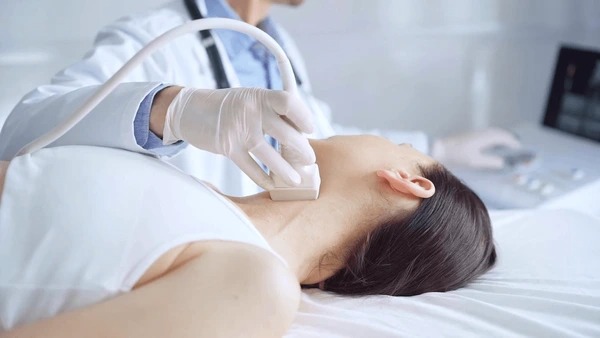
How Ultrasound Can Detect Soft Tissue Injuries Post-Accident
Ultrasound is key in modern medicine, especially when diagnosing and treating soft tissue injuries.
What Is Ultrasound?
Ultrasound is a safe, noninvasive imaging technique that uses sound waves to capture images of the body's internal structures. It’s commonly used to help diagnose conditions, guide procedures, and track treatment progress. By sending high-frequency sound waves through a transducer, they reflect off tissues and organs, giving healthcare providers a clear view of soft tissues, blood flow, and even musculoskeletal injuries. This essential tool is widely used in physical medicine and many medical fields, playing a crucial role in patient care.
Marcroft Medical offers affordable, top-brand medical equipment, including portable ultrasound machines, with exceptional customer service. Their commitment to quality and efficiency ensures your practice can focus on patient care.
How Does Ultrasound Work?
Ultrasound sends high-frequency sound waves through a transducer, with gel applied to the skin to help the waves travel into different tissues. The sound waves bounce back to the transducer, creating images that help visualize soft tissues and assess injuries like those in the musculoskeletal system. Since tissues like muscles, fat, and organs reflect sound differently, adjusting the ultrasound’s frequency and intensity helps get the clearest image. Higher frequencies provide more detail but don't penetrate as deeply, while lower frequencies reach deeper tissues but with less resolution. Tailoring these settings ensures healthcare professionals get the most accurate images for diagnosis and treatment.
What Are the Types of Ultrasound Used for Soft Tissue Injuries?
There are two main types of ultrasound used for soft tissue injuries: diagnostic and therapeutic, each serving different purposes in patient care. Diagnostic ultrasound uses high-frequency sound waves to visualize soft tissues and diagnose conditions like tendon tears, sprains, and joint effusions. It's non-invasive, radiation-free, and provides real-time imaging, allowing for accurate assessments and timely treatment decisions. On the other hand, therapeutic ultrasound focuses on healing and pain relief by improving circulation, promoting fibroblast activity, and aiding in tissue recovery. It helps accelerate healing during injury recovery phases by using sound waves to increase blood flow and stimulate collagen formation, making it an effective tool in rehabilitation. Both approaches are essential in diagnosing and treating musculoskeletal injuries, ensuring patients receive comprehensive care.
What Are the Benefits of Using Ultrasound for Soft Tissue Injuries?
Ultrasound offers numerous benefits for treating soft tissue injuries, with its non-invasive nature making it a comfortable and safe option for patients while providing fast and accurate results. It allows healthcare professionals to visualize soft tissues in real-time, enabling timely diagnoses of conditions like sprains and tendon injuries and facilitating quick treatment decisions. The absence of harmful radiation makes it safe for repeated use, especially for vulnerable groups such as children and pregnant women. Ultrasound’s portability and quick turnaround time make it invaluable in various medical settings, from emergency rooms to sports clinics, allowing for fast interventions and reducing recovery times. Its versatility in diagnostic and therapeutic applications makes it an essential tool in modern healthcare, contributing to improved patient outcomes and satisfaction.
What Are the Common Soft Tissue Injuries Detected by Ultrasound?
Ultrasound is highly effective in detecting and managing common soft tissue injuries such as sprains, strains, plantar fasciitis, tendonitis, bursitis, and contusions, making it a valuable tool in musculoskeletal care. Ultrasound helps healthcare professionals visualize these injuries and guide appropriate treatment plans by providing clear, real-time images. Ultrasound can assess ligament and muscle integrity for sprains and strains, aiding in tailored rehabilitation efforts. With tendonitis, it allows for precise monitoring of tendon inflammation and healing progress. In cases of bursitis, ultrasound helps identify inflammation and develop targeted treatment strategies. It’s equally valuable in assessing contusions, revealing the extent of tissue damage and fluid accumulation. This technology enables timely interventions, ensuring effective recovery and improved patient outcomes.
How Can Ultrasound Detect Soft Tissue Injuries Post-Accident?
Ultrasound is a key tool for detecting soft tissue injuries after an accident, providing real-time imaging that helps identify swelling, inflammation, and changes in blood flow. This allows healthcare professionals, including those at Physicians Group LLC, to assess the extent of damage and create effective treatment plans for faster recovery. Ultrasound excels at pinpointing swelling and inflammation, giving medical providers a clear understanding of injury severity and guiding timely interventions. It also offers detailed visualization of muscles, tendons, and ligaments, crucial for diagnosing and managing injuries that may not be detected through other imaging methods. Additionally, ultrasound helps monitor blood flow, indicating healing progress and enabling adjustments to rehabilitation plans for optimal outcomes.
What Are the Precautions to Take When Using Ultrasound for Soft Tissue Injuries?
When using ultrasound for soft tissue injuries, healthcare professionals must take precautions to ensure both safety and effectiveness, particularly with patients who have broken skin or are pregnant. It’s essential to avoid using ultrasound on broken skin to prevent infection and further injury and thoroughly assess the treatment area beforehand. For pregnant women, ultrasound should be used cautiously, following established guidelines to minimize risks to both mother and baby. Consulting a trained professional is vital to ensure proper technique, as improper use can lead to inaccurate diagnoses and complications. By following these best practices, healthcare providers can offer safer, more effective treatment.

Comments (0)